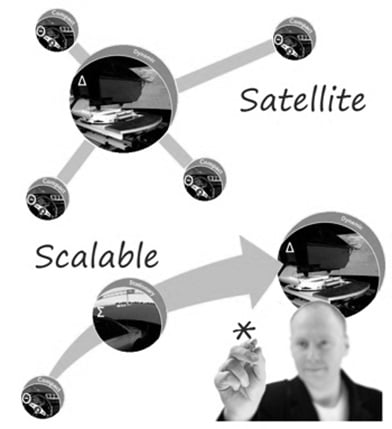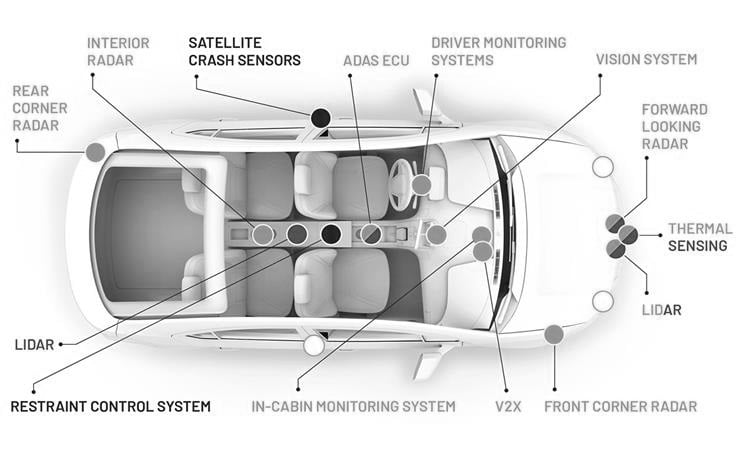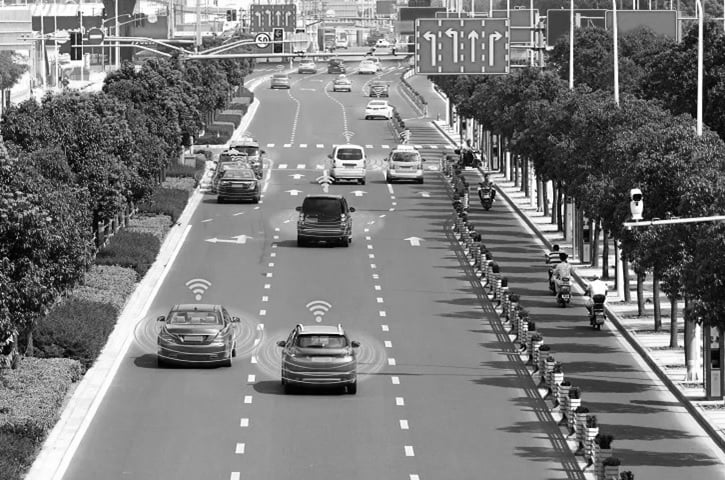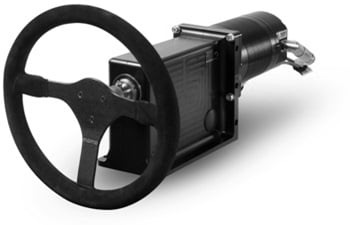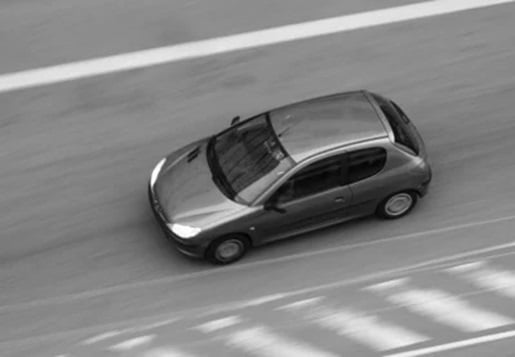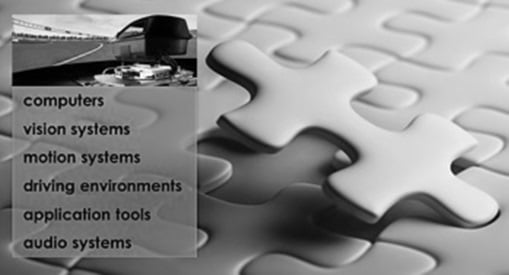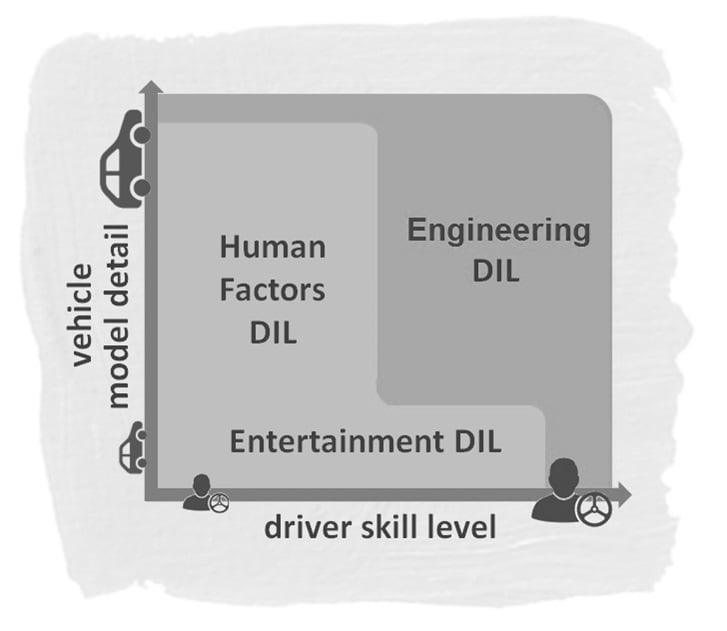In order to succeed in the marketplace, vehicle constructors strive to create cars that are appealing to the senses of prospective buyers, and deliver the correct “message” -- that careful mix of brand identity and fulfilment of target market requirements. As such, cars are never created in a vacuum; vehicle designers need to touch them, see them, and drive them as they are being developed and grant many subjective acceptance nods before releasing them into the wild. Atop this, vehicle designers must satisfy a large number of objective obligations, many of which are related to the simultaneous (and conflicting) pressures of reduced time-to-market and increased vehicle complexity and regulatory compliance. One key to success for the design and development of modern automobiles is placing real drivers into early and often contact with virtual vehicles, sub-systems and environments/scenarios via Driver-in-the-Loop (DIL) simulation. Let’s explore some specific DIL use cases.
If the shoe fits
Although there is a variety of “commodity DIL simulators” on the market today, one should be wary of any offering that is presented as a one-size-fits-all solution that will meet all your requirements with ease. The following analogy applies: If you are shopping for shoes, it is important to know what you’ll be doing in your new shoes before your search begins. Although you’ll find that all shoes share some common architectural features – things that make a shoe a shoe – it’s understood that one size certainly does not fit all. You’ll also find that a running shoe is quite a bit different than a walking shoe or dress shoe. And although you can probably use a running shoe as a walking shoe, the reverse may not be possible.
Ansible Motion always starts a new simulator deployment project by exploring the expected use cases with the end user. This approach is a critical first step because it helps define the characteristics of the simulator itself. For example, you may find that you can use a Vehicle Dynamics DIL simulator for your Human Factors DIL experiments, but the reverse may not be possible. Or you may find that you will need more fidelity or flexibility with your physics modelling software than might be available by default with a “commodity” simulator.
Use cases
All of Ansible Motion’s product offerings -- Theta, Sigma, and Delta series simulators -- are flexible configuration Vehicle Dynamics DIL simulators, the running shoes, as it were, of the simulator world. In brief, these are engineering-class simulators that are meant to be useful tools for vehicle engineers as well as experienced drivers.
Engineers want data -- objective measurements and data channel connectivity to study the results of various simulator experiments. Experienced drivers want compelling, virtual test drives that inform them of the vehicle behaviour like a real car would. The differentiation expressed within Ansible Motion’s product series is intended to cover a variety of potential use cases, so let’s use this framework for a brief exploration of some DIL simulation possibilities.
CASE 1 -- VEHICLE ENGINEER
The Challenge: “We think that Driver-in-the-Loop simulation will help us understand how our EPAS system settings are influencing our handling feeling and at the same time, consume less proving ground test time. But we’ll to need to put some work into our real-time vehicle and tyre models before we can ever hope to get the most out of a DIL simulator.”
The Solution: An easily scalable simulator that can evolve naturally with your development needs
Start with an Ansible Motion Theta series simulator. This solution already includes a high fidelity hand wheel torque feedback system and the computational horsepower to run sophisticated vehicle and tyre models suitable for Driver-in-the-Loop. A Theta series DIL simulator delivers engineering class performance in its most compact, accessible form factor. The simulator’s underpinnings enable it to be useable right now for vehicle development work, but also to grow organically over time, at your pace, with the addition of vision systems, driving cockpits, and motion systems, evolving into a Sigma series or Delta series simulator.
CASE 2 – TECHNICAL MANAGER
The Challenge: “DIL simulation as a concept is appealing. However, if we install a DIL simulator, we will have various functional groups competing over it as a resource. They will all have different demands and use cases – Some groups even use different vehicle modelling software right now -- so perhaps it would be impossible to please them all.”
The Solution: A satellite simulator network that enables several compact simulators to orbit a dynamic simulator laboratory hub
Establish a hub DIL simulation lab that hosts an Ansible Motion Delta series simulator. This state-of-the-art simulator can be operated under centralized supervision, and used as a shared tool for all your functional groups, serving as a technical showcase environment and/or virtual test drive lab for managers and evaluation drivers. Each functional group (drivetrain, steering, handling, etc.) can simultaneously manage and host their compact Ansible Motion Theta series simulator, where they can develop their detailed vehicle subsystem models with confidence. Common architecture amongst the satellite and hub simulators allows easy model sharing and cross-functional developments -- even if different modelling software is used in each group -- and group-managed satellite simulators allow deep dive R&D and experimentation without incurring resource competition in the hub simulator lab.
Conclusion - Use Cases for Automotive Driving Simulators
When correctly specified from a use case perspective, DIL driving simulators can be deployed as highly effective, highly flexible, and upgradeable tools for vehicle constructors and suppliers. There are, of course, myriad use cases, as well as ways to tailor Ansible Motion solutions to effectively address them.
To learn more about next-generation driving simulation solutions, download our FREE eBook, Looking down the road: Harnessing the benefits of driving simulator technology:

